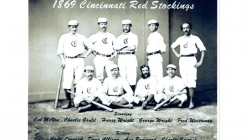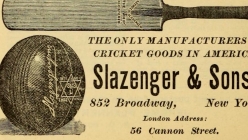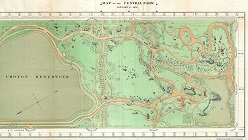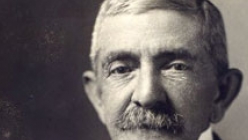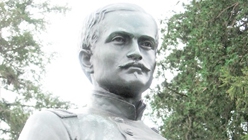History of American Cricket
A Cricketer Launches Professional Baseball
2019 Jan 24 by DreamCricket USA
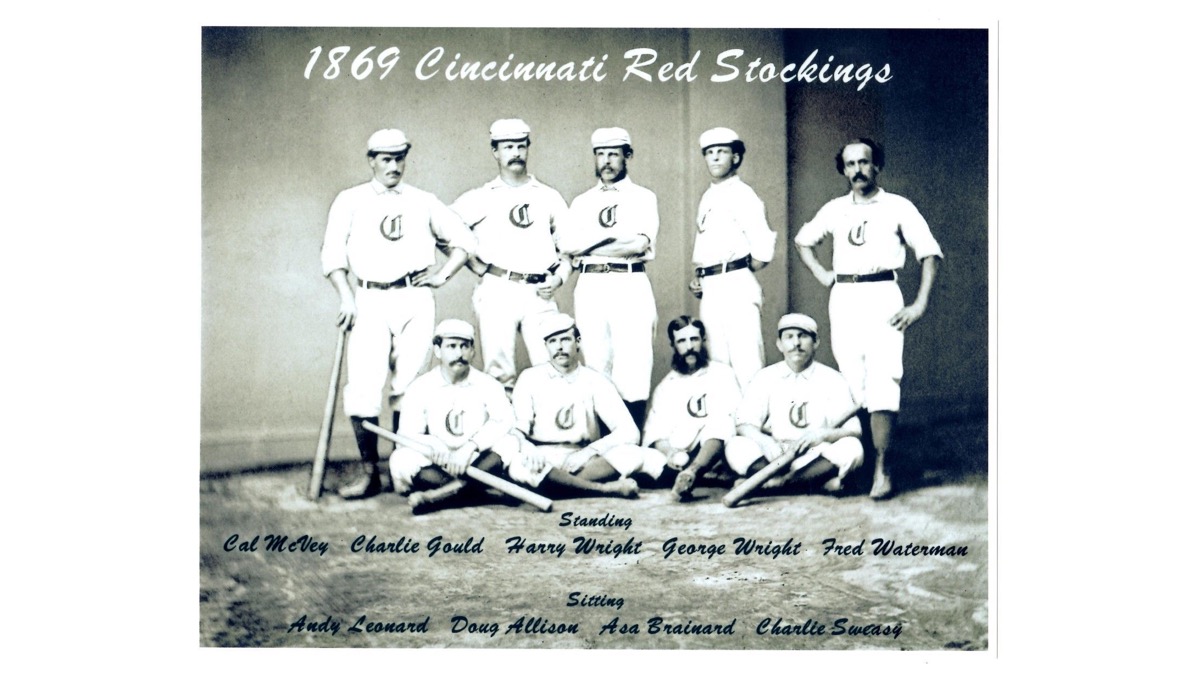
By Tom Melville150 years ago, Harry Wright, the former New York cricketer, made Red Stockings unconquerable. The team won every one of its 67 games in 1869.
All great transitions in world history have had their make-do visionary, the one individual who sees, grasps, and brings into full reality a new world from the old.
In Rome’s transition from a fragmenting republicanism to a dominating empire it was a Caesar. In France’s transition from the debilitating ancient regime to the dynamism of the enlightenment it was a Napoleon. In mid-19th century American baseball’s transition from quaint Victorian amateurism to full national professionalism it was a New York cricket player…
When Harry Wright stepped off the train in Cincinnati in 1865 to take over management of that city’s old established cricket club the winds of change were already beginning to blow in American sports: a drive to express and channel the country’s own sporting energy and identity. The former New York cricketer quickly recognized this was being fulfilled not by the sport he grew up with but by the upstart bat and ball game of baseball, and soon he had transferred his allegiance to Cincinnati’s nascent baseball team which conveniently shared its ground with the city’s cricket club.
Almost immediately Wright also recognized America’s drive for sporting achievement would not come about by duplicating cricket’s old world competitive model (which he knew first hand from his father Sam’s career as the professional of the English controlled St. George Cricket Club of New York, the country’s leading cricket organization, and one incessantly reviled by the American press for stifling American interest in cricket): a sporting arrangement of a single paid player, coaching and instructing a team of socially superior amateurs.
If one person on the team deserved to be paid, Harry reasoned, everyone on the team should be paid, with equal status and recognition, and that was how he would build his newly adopted baseball team.
So too would have to go the St. George’s insular policy of only selecting sides from its own membership or strictly local talent. Harry would draw his players nationally and recruit the best talent from anywhere in the country without regard to social status, beginning with his talented younger brother George, also an accomplished cricket player.
Now aligned with that full force and drive of America’s sporting culture which the cricket community had let slip through its fingers, Harry’s revolutionary ball club (which he dubbed the Cincinnati Red Stockings) went from strength to strength, from a good, to an outstanding, to, in 1869, an unconquerable team, winning, that year, every one of its 67 games (along with a couple of cricket matches to boot during the team’s swing to baseball-sparse California). It was something no top level baseball team had ever done before and something no professional baseball team, after 150 years, has ever done again.
Harry would go on to a long and successful career of leadership in the new American sports world he had created, moving on to Boston where he built another baseball powerhouse (also named the Red Stockings), eventually dying, in 1895, with his boots on as Chief of Baseball Umpires.
Younger brother George was more ambivalent about the sporting world his brother had brought about, actually returning to cricket after a successful career as the country’s outstanding shortstop, joining Boston’s leading cricket club the Longwood (still in existence today) where he would witness firsthand the rising tide of baseball popularity, year by year, until it had totally submerged the last islands of American cricket interest, his Longwood club itself playing its final cricket game in 1909.
Twenty eight years on, and with his cricket career long forgotten, George would help lay the final capstone to the baseball world his brother created by way of the ninety year old’s induction into the Baseball Hall of Fame’s second class (brother Harry would be inducted in 1953): the aura of national sporting veneration.
Image: Public Domain
